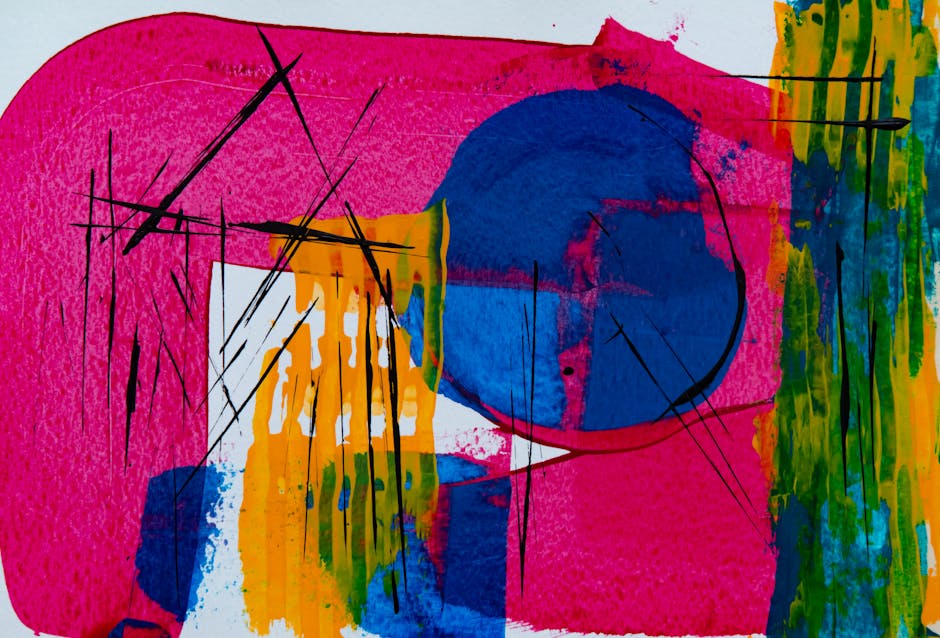Modernism and Postmodernism aren’t just art history buzzwords—they’re two very different ways of seeing the world, and they’ve left permanent marks on the culture we live in today.
Modernism came first, rising in the late 19th and early 20th centuries. Artists, writers, and thinkers were chasing truth, clarity, and progress. It was all about stripping things down to their purest form. Think clean lines, bold experiments, and a belief that art could—and should—make the world better. Picasso, Joyce, Le Corbusier—that was their vibe.
Then came Postmodernism, basically turning Modernism on its head. By the mid-20th century, faith in progress had cracked. Postmodern artists didn’t want to find truth—they wanted to question whether truth even existed. Irony, pastiche, fragmentation—this was a movement that laughed at the idea of a single meaning. Warhol and his Campbell’s Soup cans? Total Postmodern move.
Why does all this matter now? Because most of the creative work we see online—and the debates around it—still echo this split. Is content meant to be polished and “real,” or raw and cynical? Should art teach something, or just reflect the chaos? Understanding how Modernism chased purpose and Postmodernism flipped it helps us read the signals, even if those signals are buried in TikToks or memes.
Bottom line: these movements shaped our expectations of art, design, and storytelling. Knowing the difference helps you understand not just where we’ve been—but where creators might be going.
From the late 19th century to the mid-20th, a major shift occurred in the way art was made and understood. This was the era when modernism took root. At its core, it was a response to rapid industrialization, global conflict, and the breakdown of old certainties. Painters, architects, filmmakers, and writers were united by a basic goal: to strip things down to their essence. Progress mattered, but so did honesty. Ornament was out. What counted was form, structure, and clear-eyed truth.
This pursuit birthed movements like Cubism, Futurism, Constructivism, and Bauhaus—all with different flavors but similar hunger. Artists like Picasso, Mondrian, Le Corbusier, and Malevich came to define a new normal. Work from this period often rejected narrative and decoration in favor of function and composition. You can see it in abstract paintings, concrete poetry, and buildings that resemble machines.
The emphasis was technical discipline and pushing boundaries. Form followed function—not the other way around. Innovation wasn’t a trend; it was the point. Artists didn’t just make things that looked good. They wanted to say something different altogether. It was the age of the manifesto, the blueprint, the clean line. Style wasn’t random—it was purpose, reduced down to its bones.
AI Is Speeding Up Workflow—Without Replacing Humans
AI isn’t here to steal your camera—yet. But it is streamlining the grind. In 2024, creators are leaning hard into AI tools for editing, scripting, thumbnail generation, and even topic brainstorming. The upside: fewer hours lost to minutiae, more energy for the creative core. Generative tools are taking over repetitive tasks, helping vloggers work smarter, not harder.
Still, it’s not a free-for-all. AI can’t replicate a creator’s voice or their gut instinct for audience connection. Top vloggers are treating AI like an assistant, not a stand-in. They’re automating cuts and captions, maybe even pulling in outlines from advanced script tools—but the final voice, the feel, the on-screen presence? That’s still all human.
The sweet spot in 2024 is this: use machines to handle the mess, but keep your fingerprint on the frame. It’s about scaling smartly, not replacing the spark that made your audience click “subscribe” in the first place.
In 2024, the soul of vlogging is stretching beyond just medium and message—it’s grappling with meaning. Philosophically, many vloggers are shifting from presenting airtight, objective takes to embracing the grey. Instead of delivering facts or polished truths, creators lean into personal experience and uncertainty. It’s not about telling people what’s real—it’s about showing them what feels real.
Form-wise, vlog content is moving away from traditional structure. Linear stories and polished cuts are giving way to layered editing, overlapping timelines, and mixed-media mashups. Viewers are pulled through fragments and flashes designed to evoke moods instead of marching through a clear narrative.
When it comes to purpose, earlier generations of vloggers often sought to inspire or idealize. Today’s wave is more critical, more questioning. Many creators now view their platform as a space to dissect society, call out broken systems, and highlight contradiction—rather than offer clean resolutions.
And finally, the viewer isn’t just along for the ride anymore. Comments, polls, collabs, and crowd-sourced prompts are the norm. The wall between audience and creator is paper-thin; participation is expected. Vlogs aren’t just something you watch—they’re something you help shape.
It’s less broadcast, more back-and-forth. Vlogging has grown from a monologue into a living conversation.
Modernism played it straight. Clean lines, clear purpose, form following function. Whether it was painting, sculpture, or architecture, Modernist art aimed for order and refinement. It believed in progress, structure, and the idea that art had a role to elevate society. Think Le Corbusier’s buildings, Mondrian’s precise geometry, or Brancusi’s smooth abstractions — all about looking forward with a sense of control.
Then came Postmodernism, and the rulebook got torn up. This is the era of art installation, performance, and digital fusion. Postmodernists questioned everything Modernists stood for — rejecting the idea that art needed structure or a lofty message. Instead, they embraced chaos, irony, and play. You’re more likely to see a postmodern piece that interacts with its audience or uses tech elements than something hanging in a gold frame.
What Postmodern artists do best is deconstruct. They water down the hierarchy that placed fine art on a pedestal. They say: why not use everyday objects, mass media, or even your body as art? It’s not about rejecting Modernism so much as bending it until it cracks. In that tension—between the clean past and the chaotic now—is where much of today’s most provocative art lives.
Modernism and Postmodernism may sound like relics of the past, but they’re still shaping the creative pulse of contemporary art today. You see their influence in everything from minimalist design installs to chaotic, meme-fueled gallery shows. The movements don’t sit quietly in history—they echo.
Modernism’s crisp lines and ideal of progress are finding a second life among younger artists burned out by digital clutter. There’s a revival of people channeling Bauhaus simplicity, clean structures, and direct messaging—as a kind of visual detox. That said, the wide-open, remix-heavy landscape of today owes more to Postmodernism’s instincts: irony, pastiche, and questioning what’s real.
That Postmodern thread is especially loud online. Artists layering internet culture, vintage aesthetics, and pop references aren’t just “playing around”—they’re continuing a philosophy that said originality is overrated, and meaning is built through context. In a world trained to scroll past a dozen images a minute, it hits different.
At the core, both movements still steer some of our biggest questions: What counts as new? Who owns a style? Can anything still be authentic? These aren’t just academic debates—they influence curators, visual trends, and even how people treat creativity on platforms like Instagram and TikTok.
Want more background? Check out this beginner’s guide to Impressionism
Different art styles aren’t a hierarchy—they’re reflections of different worldviews. Some artists speak through texture, others through absence. A cramped canvas filled with chaos might say more about the human condition than a minimalist sweep of gray. Neither is better or worse. Just different lenses on the same raw material: experience.
Getting this unlocks a wider way to see. You start noticing how space is used, how emotion rides color, how composition hints at belief—or rebellion. Understanding that each piece carries its own logic makes the whole field more accessible. It’s not about agreeing with every work. It’s about learning to see what it’s trying to say.
Don’t overthink it. Let the art speak. Step in, sit with it, move on when you’re ready. That’s how engagement turns real.

 Trevana Kelthorne, the visionary behind FLP Emblemable, built the platform on a passion for creativity, artistic exploration, and global expression. With years spent studying diverse art movements and supporting emerging creators, she founded FLP Emblemable to give artists a space where ideas, techniques, and inspiration can flow freely. Trevana’s mission is to connect communities through art, encourage experimentation, and spotlight the voices shaping tomorrow’s creative world.
Trevana Kelthorne, the visionary behind FLP Emblemable, built the platform on a passion for creativity, artistic exploration, and global expression. With years spent studying diverse art movements and supporting emerging creators, she founded FLP Emblemable to give artists a space where ideas, techniques, and inspiration can flow freely. Trevana’s mission is to connect communities through art, encourage experimentation, and spotlight the voices shaping tomorrow’s creative world.